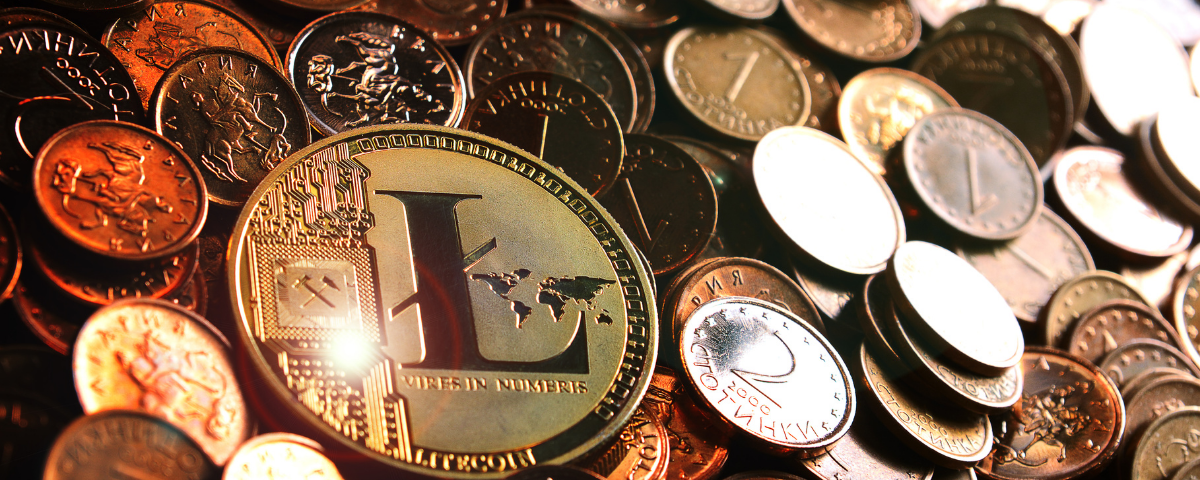Litecoin (LTC) was released in 2011, and this peer-to-peer crypto is one of the most popular altcoins in the world. It is well known because of its fast transaction speed and because it is fairly easy to mine. Like Bitcoin, it uses an SHA-256 hashing algorithm and uses Scrypt (a memory-hard algorithm) to store its data in a blockchain.
Litecoin, a spinoff from Bitcoin, was created in October 2011 by former Google engineer Charles Lee. It uses a different hashing algorithm and a different proof-of-work scheme, making mining easier and more efficient. The Litecoin network processes a block every 2.5 minutes, compared to Bitcoin’s 10-minute block time, and its average block size is about a quarter of a Bitcoin’s. Also, the block reward of Litecoin is currently 25 LTC—15 LTC per block, which comes out to an average of 125 LTC per day.
This cryptocurrency that started in 2011 has a network of a billion people in a single currency. It was the first cryptocurrency to be mined with a CPU and is considered a “light” version of Bitcoin. Litecoin is bitcoin, but lite. Litecoin aims to be the silver to Bitcoin’s gold and is frequently compared to Bitcoin Classic, a bitcoin alternative that aims to be bitcoin’s gold. Like Bitcoin, Litecoin is a decentralized currency based on the blockchain, making it resistant to censorship and fraud.
Litecoin is a peer-to-peer cryptocurrency described as “Bitcoin Lite” and is described as a fork of Bitcoin. Litecoin was released on October 13, 2011, and its source code is based on Bitcoin (it differs from Bitcoin in that it allows for a larger number of transactions to be included in each block). Litecoin uses the Scrypt proof-of-work algorithm instead of Bitcoin’s SHA-256, making it more difficult to mine with normal computers. In April 2013, Litecoin was one of the five most valued cryptocurrencies, as measured by market capitalization. But as of December 13, 2013, it had fallen to the 7th most valued cryptocurrency.
Litecoin was created in 2011 by a former Google employee who wanted to create a faster, cheaper version of Bitcoin. The idea was simple: create a new cryptocurrency that was faster and cheaper to use than Bitcoin, and allow it to be used as a rewards system for those who helped improve the network. This would help the currency grow faster since it would have a higher price, which would attract more developers.
Litecoin is intended to operate with no central authority, recording all transactions and balances on a public distributed ledger called the blockchain. It was inspired by, and in technical details, is nearly identical to, Bitcoin, which was designed by Satoshi Nakamoto. 81 million Litecoins have been pre-mined (from which 25% of the total will be awarded to miners and developers). Litecoin can be efficiently mined with consumer-grade hardware, unlike Bitcoin.
Litecoin prides itself on having faster transaction times and cheaper transaction fees than Bitcoin. It doesn’t, however, have as many alternative uses as Bitcoin and other cryptocurrencies do.
Litecoin, as you likely know, is a cryptocurrency. Introduced as a fork of the Bitcoin network in 2011, the Litecoin network has grown to over 9 million users and over $25 billion in market capitalization. The network is built upon a dual-layer design that enables it to scale up to 3.6x the speed of Bitcoin and process up to 2x the number of transactions, with a block time of 2.5 minutes. Litecoin’s blockchain is also capable of fast transaction confirmations, and transaction fees are currently one-seventh of those on the Bitcoin network.
History is important, especially when you’re talking about a currency as young as Litecoin. The project was launched in October 2011 by creator and lead developer Charlie Lee. Its name is a tribute to his favorite childhood book, “Lite and the Brite.” The goal was to create a currency that could improve on the flaws of Bitcoin. The initial goal was to make Litecoin as fast as possible. To do this, the software used low amounts of memory and also prioritized speed over security.



